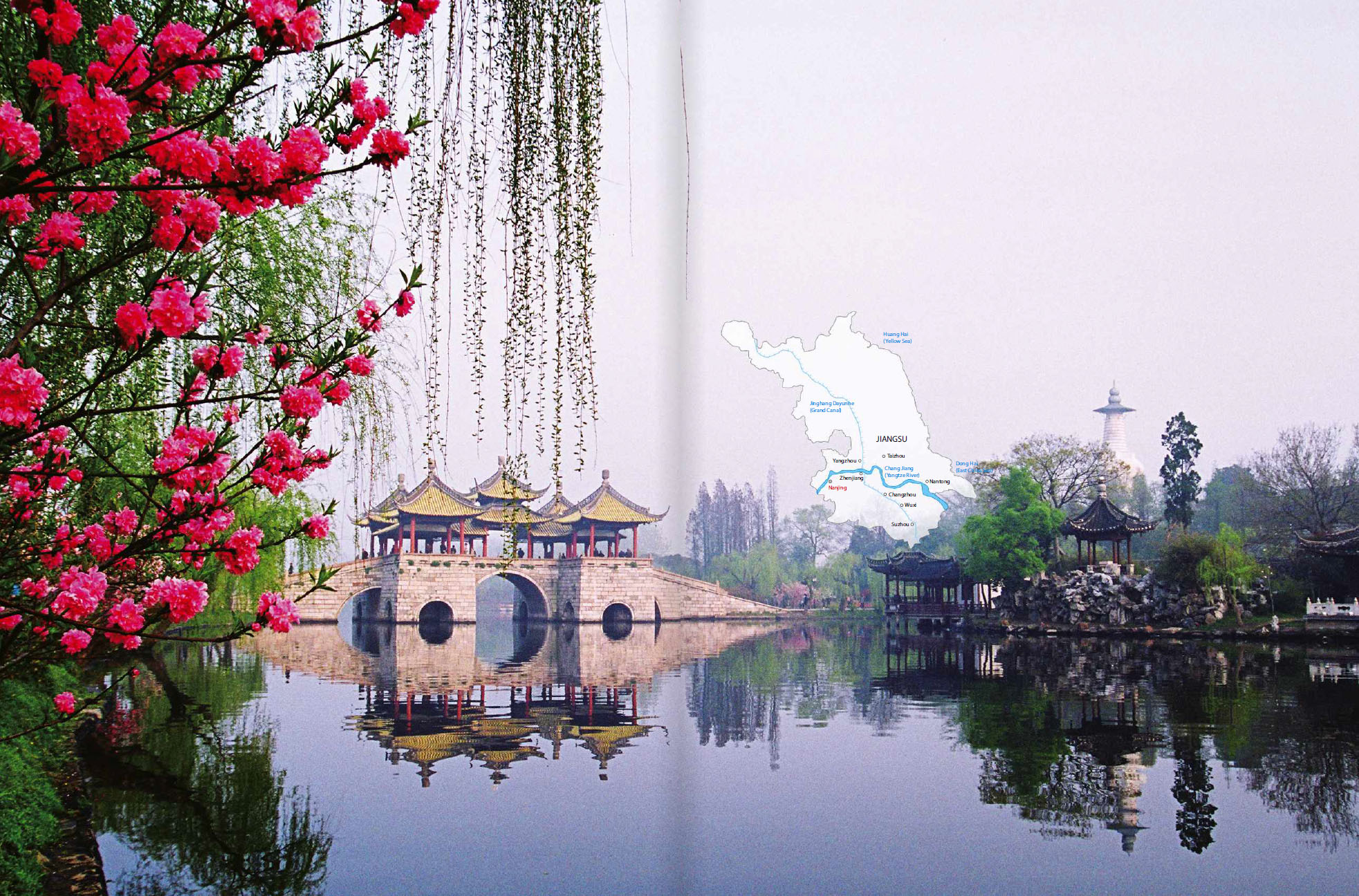
The Five Pavilion Bridge is a centrepiece of Shouxihu (Slender West Lake) in the city of Yangzhou – situated on China’s centuries-old Grand Canal
Home to almost 80 million people, the eastern coastal province of Jiangsu has an eventful history that spans more than three millennia. Every hilltop temple and ancient city tells its own story, and the people of this prosperous land are happy to share the tales of the emperors, poets and religious fgures who have walked the narrow streets and muddy canals in times gone by.
Both the Yangtze River and the Grand Canal, the oldest part of which dates back to ffth century BC, run through this land, enabling Jiangsu to secure strong trading links – its produce, including silk, rice and vinegar, was easily transported throughout China for hundreds of years. As such, the province has attracted merchants and visitors from far and wide since the dawn of its history.